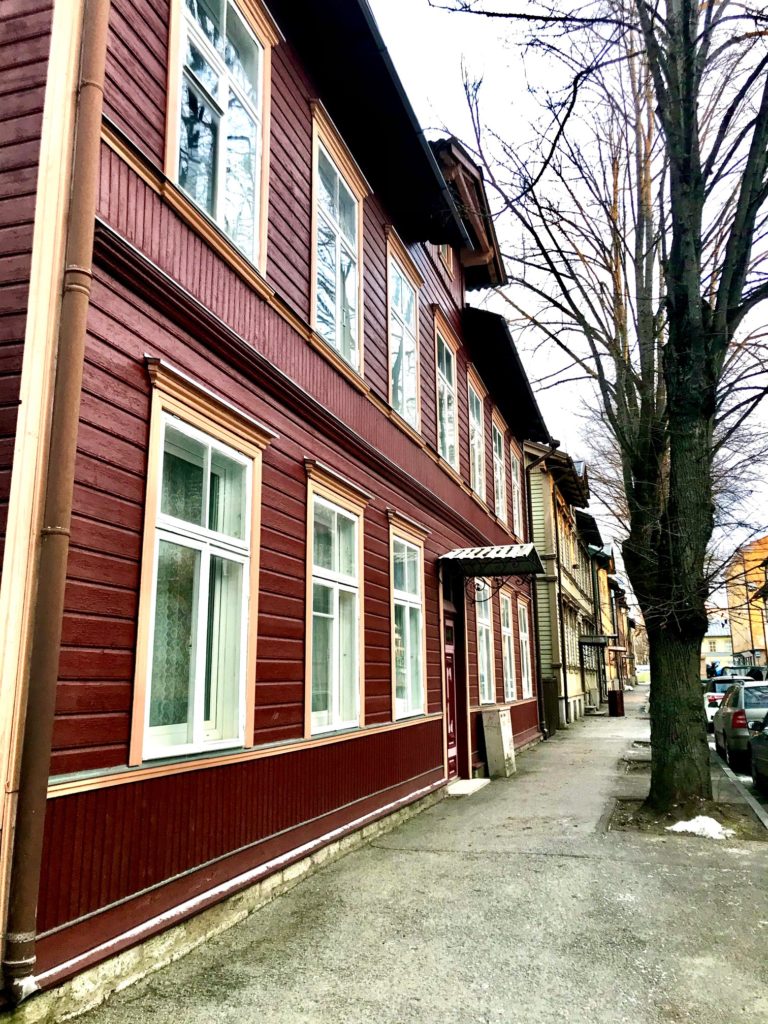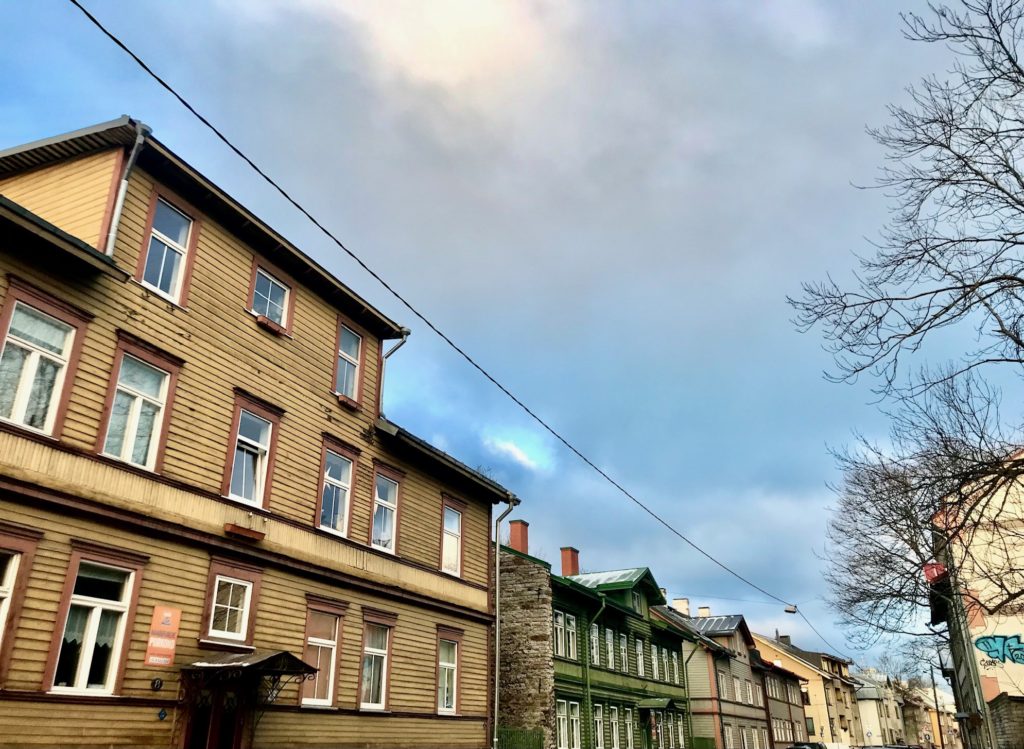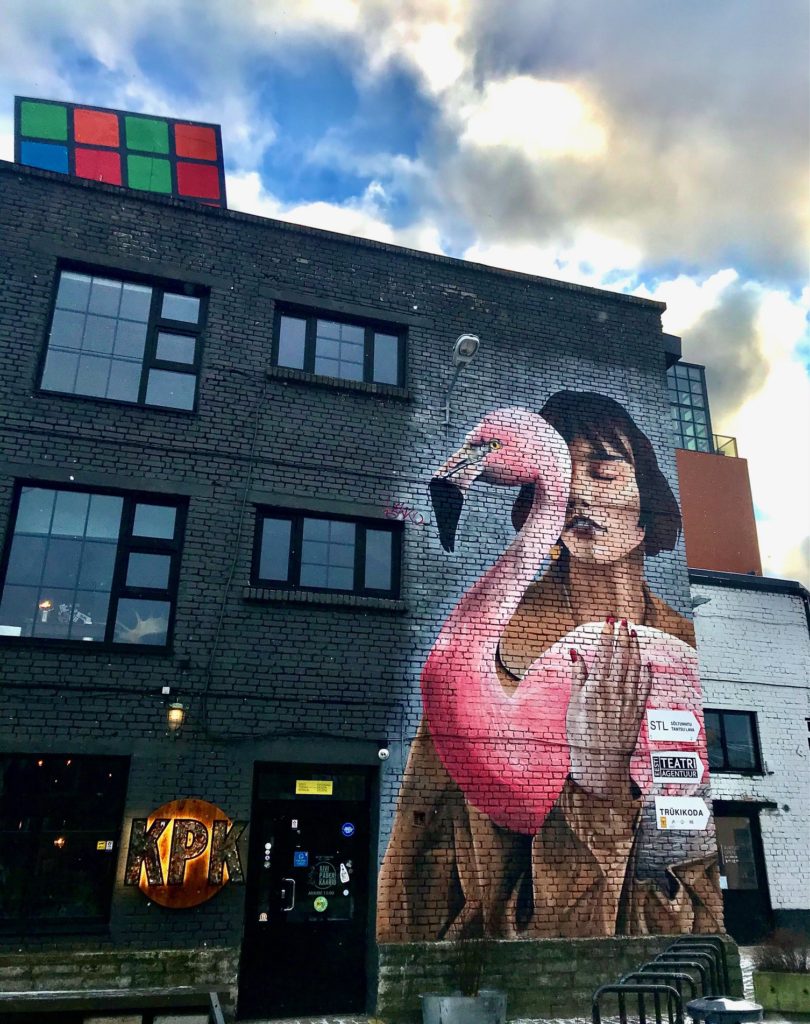
I recently visited Tallinn in December 2021 with a friend, where we made a stop at Kalamaja, Tallinn’s creative district. Throughout history, Kalamaja was best known as Tallinn’s primary fishing harbour, before it morphed into an industrial district. Now, Kalamaja is considered Tallinn’s ‘coolest’ and most creative neighbourhood. Hidden behind the train station and only a 10 minute walk from the old town, Kalamaja is well worth a visit.
With its traditional wooden houses, unique creative city and diverse array of shops, markets and galleries, Kalamaja quickly became my favourite stop on our visit.
Telliskivi creative city
We were enticed to Kalamaja by the prospect of Telliskivi creative city. We had heard it was an old industrial area converted into the creative hub of Tallinn, and were intrigued to see what was there. It was a cold, snowy day and as we approached the area, we were in awe of what we saw.
We started our visit with a walk through Depoo, a food market made of old shipping containers, buses and train carriages. The whole area was incredibly artsy and everything we saw was uniquely decorated, which created a diverse but beautiful scene. There were food stalls consisting of every cuisine, from burgers and burritos to sushi and kebabs.
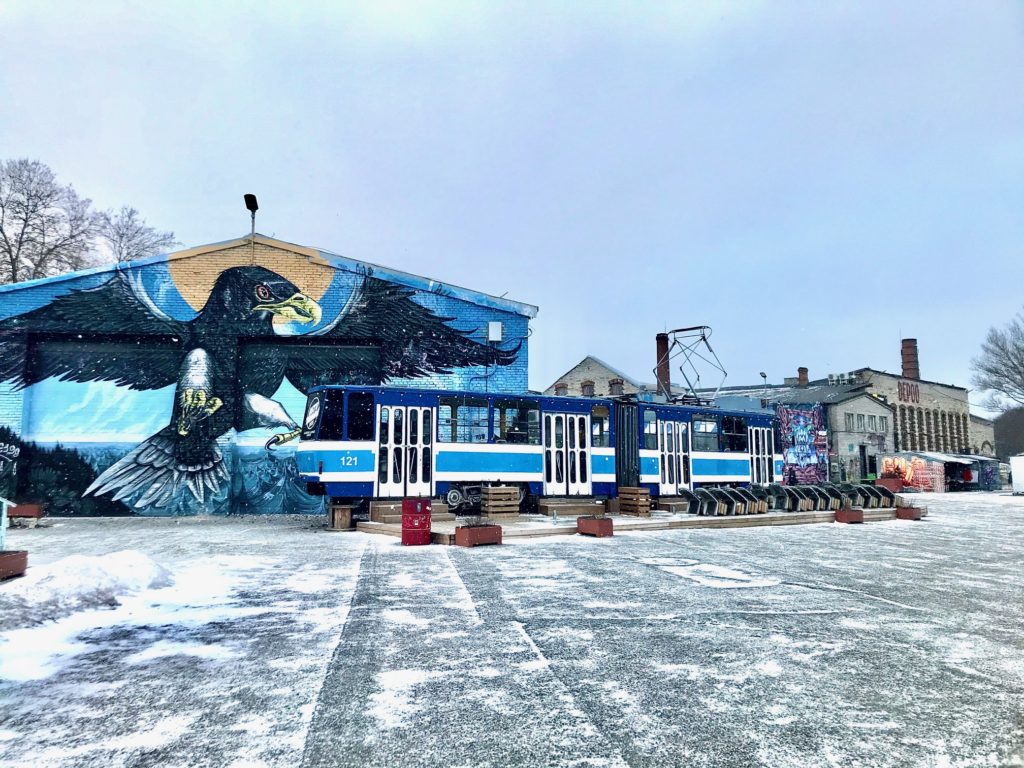
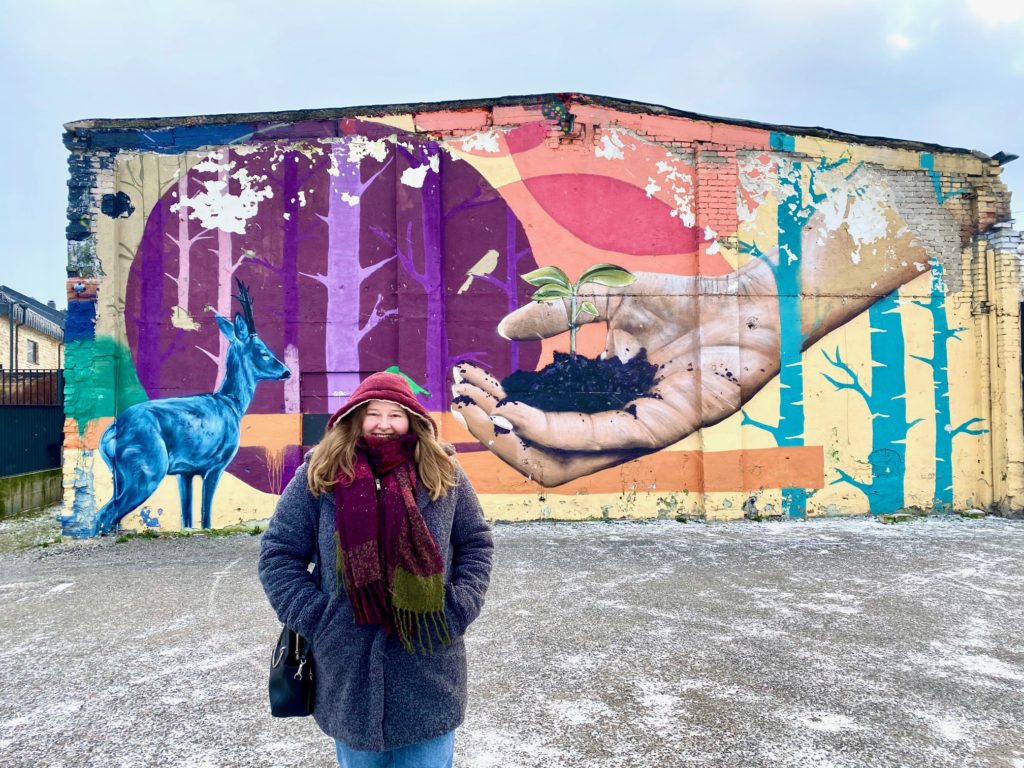
After stopping for photos at Depoo, we wandered onwards to the centre of Telliskivi creative city, where we were hit by even more artwork, galleries and many independent shops and cafes. We walked through the city, taking in the artwork and admiring the beautifully curated shops, whilst taking shelter from the cold weather.
My favourite part of Telliskivi creative city is that everything is a piece of art. Every building is painted with beautiful figures, scenes and patterns. There are old decorated cars, buses and train carriages on every corner, which gives the industrial feel of the area a new lease of life.
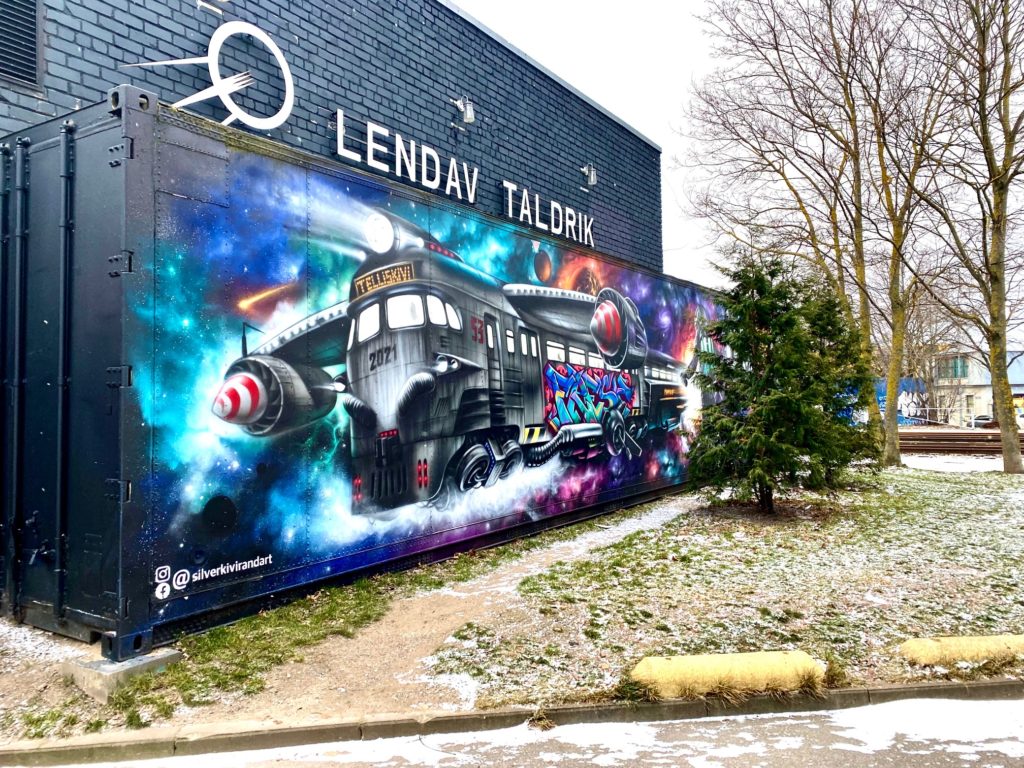

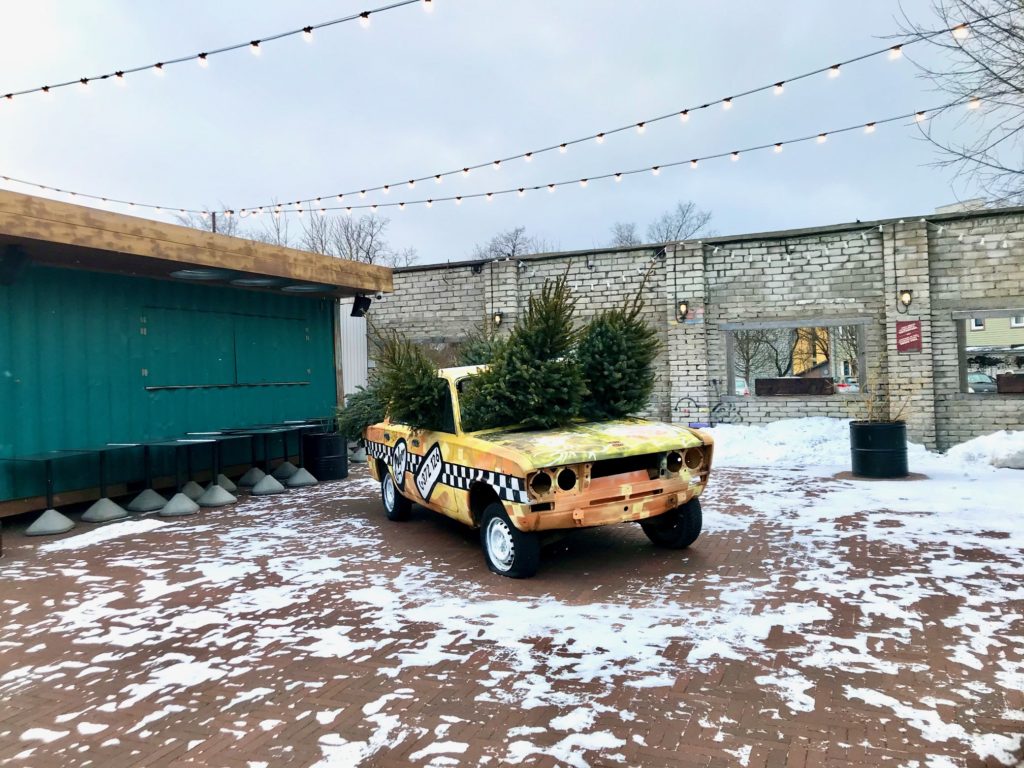
Balti Jaam market
A stone’s throw away from Telliskivi creative city is Balti Jaam market, a huge market with local produce, including meat, fish and vegetables, clothes stalls, alongside Estonian antiques and crafts.
As you enter the market on the ground floor, there is a large food hall, with an array of fresh fruit, vegetables and other local delicacies. Independent shops line the food stalls, selling a variety of produce such as cheese, bread, wine and cured meats.
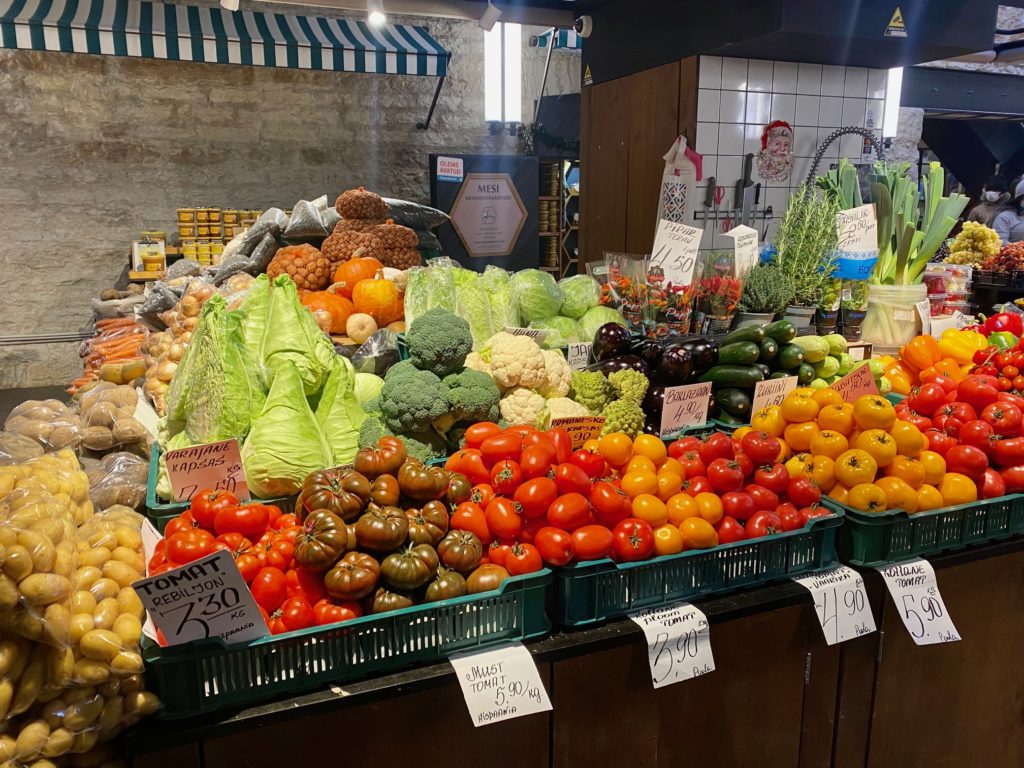
On the first floor, there are a variety of stalls selling household goods, clothes, handicrafts and toys, whilst the lower ground floor has a large supermarket. There are also a number of restaurants throughout the market. We popped into a cafe called ‘So Brooklyn’ for brunch and a coffee, which was delicious. I would thoroughly recommend it!
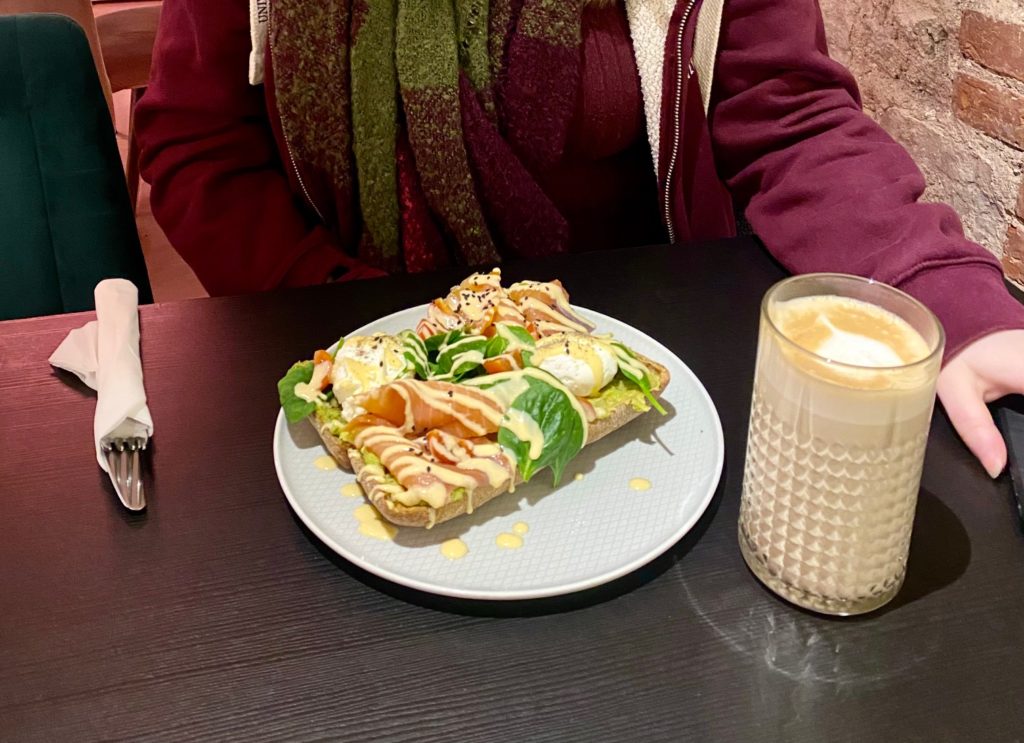
Traditional Estonian houses
Our final stop in Kalamaja was to visit Valgevase, a street with traditional coloured wooden houses. These charming houses were originally built to house factory workers, but now stand as a popular tourist spot, showing a glimpse of what Kalamaja would have looked like.
I would fully recommend a visit to this endearing district, packed full of history, culture and charm!
